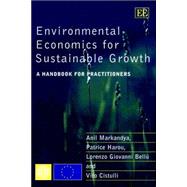|
ix | ||||
|
xiii | ||||
|
xix | ||||
| Foreword | xxi | ||||
| Acknowledgements | xxiii | ||||
|
1 | (14) | |||
|
3 | (1) | |||
|
4 | (3) | |||
|
7 | (8) | |||
| PART I ECONOMY-WIDE POLICIES AND THE ENVIRONMENT | |||||
|
15 | (26) | |||
|
17 | (1) | |||
|
18 | (2) | |||
|
20 | (3) | |||
|
23 | (2) | |||
|
25 | (6) | |||
|
31 | (3) | |||
|
34 | (3) | |||
|
37 | (4) | |||
|
41 | (68) | |||
|
43 | (1) | |||
|
44 | (13) | |||
|
57 | (11) | |||
|
68 | (41) | |||
|
74 | (19) | |||
|
93 | (10) | |||
|
103 | (6) | |||
|
109 | (56) | |||
|
111 | (1) | |||
|
111 | (2) | |||
|
113 | (3) | |||
|
116 | (4) | |||
|
120 | (2) | |||
|
122 | (1) | |||
|
123 | (4) | |||
|
127 | (38) | |||
|
129 | (6) | |||
|
135 | (7) | |||
|
142 | (3) | |||
|
145 | (20) | |||
|
165 | (54) | |||
|
167 | (1) | |||
|
167 | (3) | |||
|
170 | (7) | |||
|
177 | (20) | |||
|
197 | (14) | |||
|
211 | (3) | |||
|
214 | (1) | |||
|
215 | (4) | |||
|
219 | (28) | |||
|
221 | (1) | |||
|
221 | (1) | |||
|
222 | (1) | |||
|
222 | (9) | |||
|
231 | (4) | |||
|
235 | (12) | |||
|
238 | (4) | |||
|
242 | (5) | |||
|
247 | (22) | |||
|
249 | (1) | |||
|
249 | (5) | |||
|
254 | (3) | |||
|
257 | (2) | |||
|
259 | (1) | |||
|
260 | (4) | |||
|
264 | (5) | |||
|
268 | (1) | |||
|
269 | (22) | |||
|
271 | (1) | |||
|
272 | (1) | |||
|
272 | (3) | |||
|
275 | (1) | |||
|
276 | (2) | |||
|
278 | (1) | |||
|
278 | (8) | |||
|
286 | (1) | |||
|
286 | (5) | |||
| PART II ENVIRONMENTAL VALUATION METHODS FOR POLICIES AND PROJECTS | |||||
|
291 | (40) | |||
|
293 | (1) | |||
|
293 | (3) | |||
|
296 | (12) | |||
|
308 | (23) | |||
|
320 | (11) | |||
|
331 | (32) | |||
|
333 | (3) | |||
|
336 | (3) | |||
|
339 | (24) | |||
|
344 | (9) | |||
|
353 | (7) | |||
|
360 | (3) | |||
|
363 | (58) | |||
|
365 | (6) | |||
|
371 | (50) | |||
|
379 | (10) | |||
|
389 | (14) | |||
|
403 | (13) | |||
|
416 | (2) | |||
|
418 | (3) | |||
|
421 | (68) | |||
|
423 | (5) | |||
|
428 | (61) | |||
|
436 | (16) | |||
|
452 | (13) | |||
|
465 | (19) | |||
|
484 | (2) | |||
|
486 | (3) | |||
|
489 | (26) | |||
|
491 | (2) | |||
|
493 | (3) | |||
|
496 | (5) | |||
|
501 | (12) | |||
|
513 | (2) | |||
|
515 | (18) | |||
|
517 | (1) | |||
|
518 | (3) | |||
|
521 | (12) | |||
|
533 | (24) | |||
|
535 | (1) | |||
|
535 | (10) | |||
|
545 | (12) | |||
| Index | 557 |








